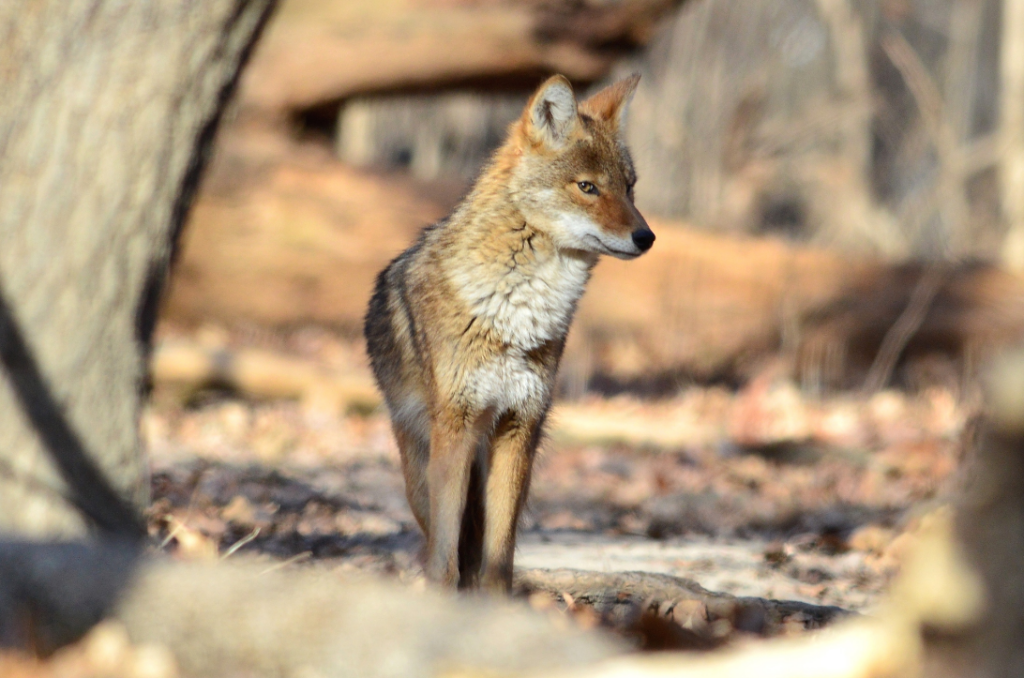365 Days on iNaturalist
My formal resolution for 2017 was typical – lose ten pounds. It was with that goal in mind that I went out every day over the holidays; it helped that the weather was not very harsh. It was only in late January that the idea of entering at least one observation on iNaturalist every day of the year entered my mind. I acknowledged that such a goal would inevitably mean going out in some crappy weather, which would also mean accepting the challenge of something observable when many critters were holed up. Gray days close in on my mind like impenetrable fog, but I reasoned that getting outdoors in lousy conditions could only help with my first goal.
The year brought signs of an early spring; I observed skunk cabbage (Symplocarpus foetidus) poking through the melting ice at a seepy place in Warrenville on February 13th. On February 17th I saw my first butterfly of the season – an eastern comma (Polygonia comma) on a mild day at Spears Woods. The next day was the Wild Things Conference, where Evan Barker asked if I would do the “Big Year” again. I replied that I was actually thinking of something a bit different, maybe concentrating more on finding species that I had never seen. I didn’t mention the “every day” idea.
The conference lasted all day and I was only out for a few minutes at lunchtime. There I saw a small green patch of Pachysandra terminalis among the prevailing dormant vegetation, and took a photo with my phone. I put the observation on iNat and thought, 49 days into the year, “Maybe you can really do this.” When I accompanied my son on several college visits, I took the camera along to record weeds, street trees, and in one case, a flock of wild turkeys.

March 8 was one of my biggest challenges. I saw nothing on the way to work then was stuck in an interminable meeting that lasted through lunchtime. I left the office as the light started to fade and headed to pick up my son at College of DuPage, thinking I could maybe find some geese in the pond there. The iNat gods smiled, and in the fading sunlight near the roadside was a perched red-tailed hawk (Buteo jamaicensis). I photographed it at 5:16 PM, probably my latest observation on a day when I had only one. The red-tailed hawk became a sort of motto bird for the year with 291 observations.
As the weather warmed, getting observations became easier – and the ticks exploded. It was the worst tick year in my memory. As an example, I visited sites in Grundy and Will County on June 7th. I encountered a total of 25 ticks – many of them I spotted and removed as I walked, others I saw crawling up my pants later. I pulled the last one out of my hair as I showered that night. Amazingly none of them latched on. I became a picture of the high-fashion pants-tucked-in-socks naturalist.
My boots fell apart, and luckily my son did not like a pair he had bought online. My venerable macro zoom lens became a whirring, clunking liability that was retired by the fall and I learned to photograph plants with my birding lens – sort of. I electronically exchanged maps of rare beauties with friends. I learned to use online plant keys on my phone, when I had a signal. I traded messages like “WTH is this?” “IDK, maybe Cirsium altissimum rosette.” Those “WTH?” provided as many misses as hits, but that’s the price of trying to ID plants in all seasons.
In the end 2017 was not about a contest – maybe a contest of wills between me and the elements – but the year became a journey. I walked over 1700 miles (thanks, Fitbit). I put a lot of miles on the Prius. I photographed an endangered dragonfly in a bog with water overtopping my boot. I found a reported Liparis liliifolia without any map, just by following some vague instinct. I developed a permanent stain on the left knee of some pants. I bushwhacked well into a degraded wetland only to find that I totally misinterpreted a map, and my Platanthera quarry was a briar-y quarter mile away. And, I had a blast. On December 31st, I photographed five birds, a squirrel, six plants, and two fungi. Then I went home and made the traditional (?) New Year’s Eve paella. Oh, and I still lost those ten pounds.
—
Mark Kluge is a natural areas steward at Theodore Stone Forest Preserve in Cook County, Illinois. He catalogued his daily observations of plants, animals, and other creatures on iNaturalist every day of 2017 — totaling more than 3,600 observations of over 1,200 different species. iNaturalist is an online community of citizen scientists, experts, and all-around nature lovers that add to a worldwide database of biodiversity information. In 2017, Illinois plant enthusiasts uploaded over 20,000 observations of plants during the second annual Illinois Botanists Big Year.
